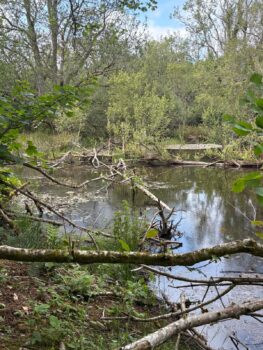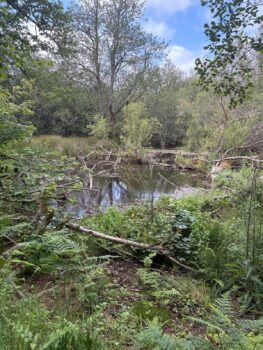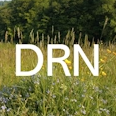Moor Barton Wilding: Rewilding, Beavers & Habitat Restoration on Dartmoor
Moor Barton Wilding: Rewilding in Action on Dartmoor
Moor Barton Wilding is one of the most inspiring rewilding projects in the UK. Set on some 120 acres of land in Dartmoor, Devon, Moor Barton is doing more than just talking about restoring nature—it’s doing it, with people, with species, and with real, visible ecological transformation.
We were fortunate to join a recent beaver safari at Moor Barton, where we witnessed first-hand the remarkable transformation of what was once a plantation into a thriving wetland ecosystem.
Below is a deep dive into Moor Barton’s work: what they do, how they do it, why it matters, and how it connects to beaver reintroduction and amphibian conservation (such as the northern pool frog).
This stream runs through the Moor Barton site, where beavers quickly began dam building soon after their release.

The scale of their dam building is remarkable, this is just a small section

The results speak for themselves!



What is Moor Barton Wilding
Location & Land: 120 acres of mixed habitat—wood pastures, wetlands, woodlands, meadows, glades—on Dartmoor.
Founders & Leadership: Led by Robin Bowman (among others) with deep experience in land management, nature connection, wilderness skills, and rewilding people as well as land.
Vision & Approach:
- Letting natural processes lead (rewilding).
- Encouraging biodiversity through habitat restoration.
- Engaging communities, volunteers, and learners.
- Including keystone species (one of which is beavers).
- Running rewilding courses, community work days, educational programs.
Key Activities at Moor Barton
Here are some of the practical ways Moor Barton promotes ecological recovery:
Species Reintroductions / Keystone Species
- Beavers: Moor Barton has reintroduced beavers as part of its ecological engineering efforts. These animals help reshape waterways, produce new wetlands, and catalyse rapid change in habitat structure.
- Not yet fully public in this source, but linked efforts such as the northern pool frog are part of their species ambitions. (We will publish a separate post on the northern pool frog soon.)
Habitat Restoration
- Wetland creation: Beavers dam small streams and raise water tables, forming ponds and marshy zones.
- Woodland & meadow restoration: allowing more natural growth, creating glades, letting trees regenerate.
- Rewilding connectivity between habitat patches—improving corridors, edges, and mosaic landscapes.
Community & Learning Engagement
- Seasonal rewilding weekends and community work days (“Community Rewilding Fridays”, etc.) where volunteers help with tasks like coppicing, planting, surveying, habitat management.
- Educational camps and courses: linking people to nature, teaching wilderness skills, ecological understanding.
- Beaver safaris and tours: showing people how beavers work, how habitat changes happen over time.
Take a look here.
Funding & Land Stewardship Mechanisms
- Moor Barton is volunteer-led in many respects; also hosts camps, courses, and receives environmental land management funding (such as Higher Tier Stewardship). Seeking to fund not just species reintroduction but infrastructure, monitoring, inclusive access.
Why Moor Barton’s Work is Valuable (Especially for Beavers & Habitat Restoration)
Moor Barton is a live example of how rewilding + keystone species can drive ecological change. Here are specific benefits and insights:
- Catalysing rapid ecological change: As one report noted, beavers quickly modified the landscape — within weeks of release, dams were built, ponds formed, and wildlife such as frogs, dragonflies, and birds arrived almost immediately. This shows how species reintroduction is not just a long-term vision but can deliver near-term results.
- Hydrological benefits: Beaver dams slow water flow, raise water tables, and create wetland zones that buffer flood risk, store water in dry times, and improve groundwater recharge.
- Biodiversity hotspots: Wetlands, pond margins, and damp zones attract amphibians, insects, and birds; wet woodland and meadow edges increase habitat diversity. This mosaic also supports small mammals such as dormice, which benefit from the greater variety of food sources, denser cover, and interconnected habitats that beaver-created landscapes provide.
- Landscape connectivity & resilience: Rather than isolated patches, Moor Barton’s multi-habitat layout — enhanced by beaver-modified water systems — helps create resilient ecological networks for species to move, thrive, and adapt.
- Human engagement & education: By involving volunteers, learners, and visitors, the project builds awareness, skills, and local support for conservation. This social dimension is critical for long-term success.
- Species conservation beyond beavers: While beavers are keystone species, Moor Barton’s work extends to other threatened animals, such as the northern pool frog, showing a commitment to whole-ecosystem recovery rather than single-species restoration.
How Moor Barton Links with Beavers (From the Beaver Blog)
If you’ve read the earlier Beavers & UK conservation blog, Moor Barton serves as a prime case study for many of the benefits we discussed:
- Example of beaver reintroduction in action, illustrating habitat creation, water quality improvements, wetland formation.
- Demonstrates co-existence, where land management, community, and wildlife all adapt together.
- Offers visual, measurable impacts: pond formation, wildlife use, vegetation changes.
So when you read the Beaver guide, Moor Barton is one of the projects that puts its ideas into practice.
Connection with Northern Pool Frog & Amphibian Conservation
Though the northern pool frog is not yet fully released (or widely reintroduced) in Moor Barton, it’s part of Moor Barton’s wider species ambition. This suggests:
- Moor Barton is not just thinking in terms of generic biodiversity but in terms of reintroducing lost native amphibians—which benefits significantly from wetland creation (which beavers help with).
- Amphibians (like frogs) respond quickly to wet areas, pond edges, still water; beaver-created ponds are prime real estate for them (as Moor Barton’s observations of frogs’ rapid arrival show).
We’ll produce a separate full post on the northern pool frog, its favourable habitat requirements, threats, and how projects like Moor Barton can support its return.
Challenges & Lessons
Moor Barton’s work, like any ambitious ecological restoration, has challenges. Some lessons to keep in mind:
- Monitoring and adaptive management: You need robust monitoring of water levels, species presence, impacts on neighbouring land, tree loss/coppicing.
- Balancing human & wildlife needs: Managing beaver activity so dams don’t flood undesired areas; choosing where to allow wetland expansion vs where to protect infrastructure.
- Funding constraints: Even with courses/camps, grants, stewardship payments, resources are tight. Volunteer capacity, equipment, inclusivity all require ongoing support.
- Patience and expectation management: Some changes are fast (ponds form, wildlife arrives), some are slow (soil health, woodland structure, full species assemblage).
What Moor Barton Offers for Projects Elsewhere (e.g. Devon & Cornwall Rewilding & Wildlife Pond Builders)
If you are planning wildlife pond construction, wetland restoration, or species reintroduction elsewhere (Devon & Cornwall included), Moor Barton offers several templates:
- Use beavers as ecosystem engineers to reduce effort in creating wetlands.
- Design ponds/wet areas where amphibians and insects will thrive—pond edges, marshy zones, woodland adjacency.
- Incorporate community education and volunteer programs to build stewardship.
- Seek funding via environmental land management or stewardship schemes.
- Adopt a holistic mindset: keystone species + habitat + people.
Call to Action / How to Support Moor Barton & Learn More
Moor Barton Wilding welcomes:
- Volunteers: Community rewilding weekends, Rewilding Fridays, etc. Moor Barton Wilding
- Visitors / Tours: Beaver safaris, tours of the land, bespoke group visits.
- Funders / Supporters: Whether via donations, sponsoring equipment, supporting species reintroduction.
And for those interested in rewilding or habitat restoration, Moor Barton is a living example worth visiting, learning from, and supporting.






